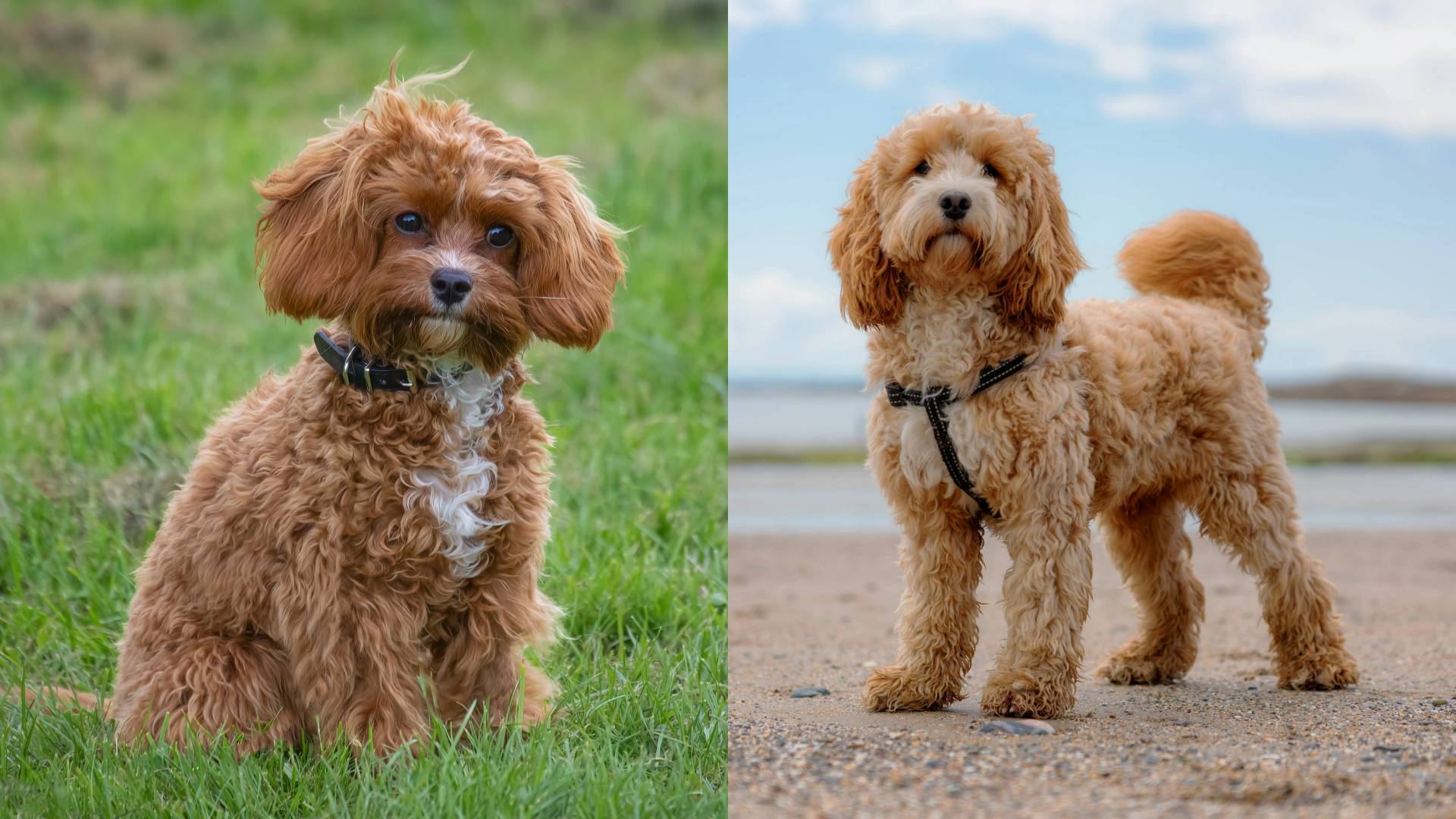How to moisturize your dog’s skin
From a diet rich in fatty acids to regular grooming sessions, here's how to moisturize your dog's skin and keep it looking its best
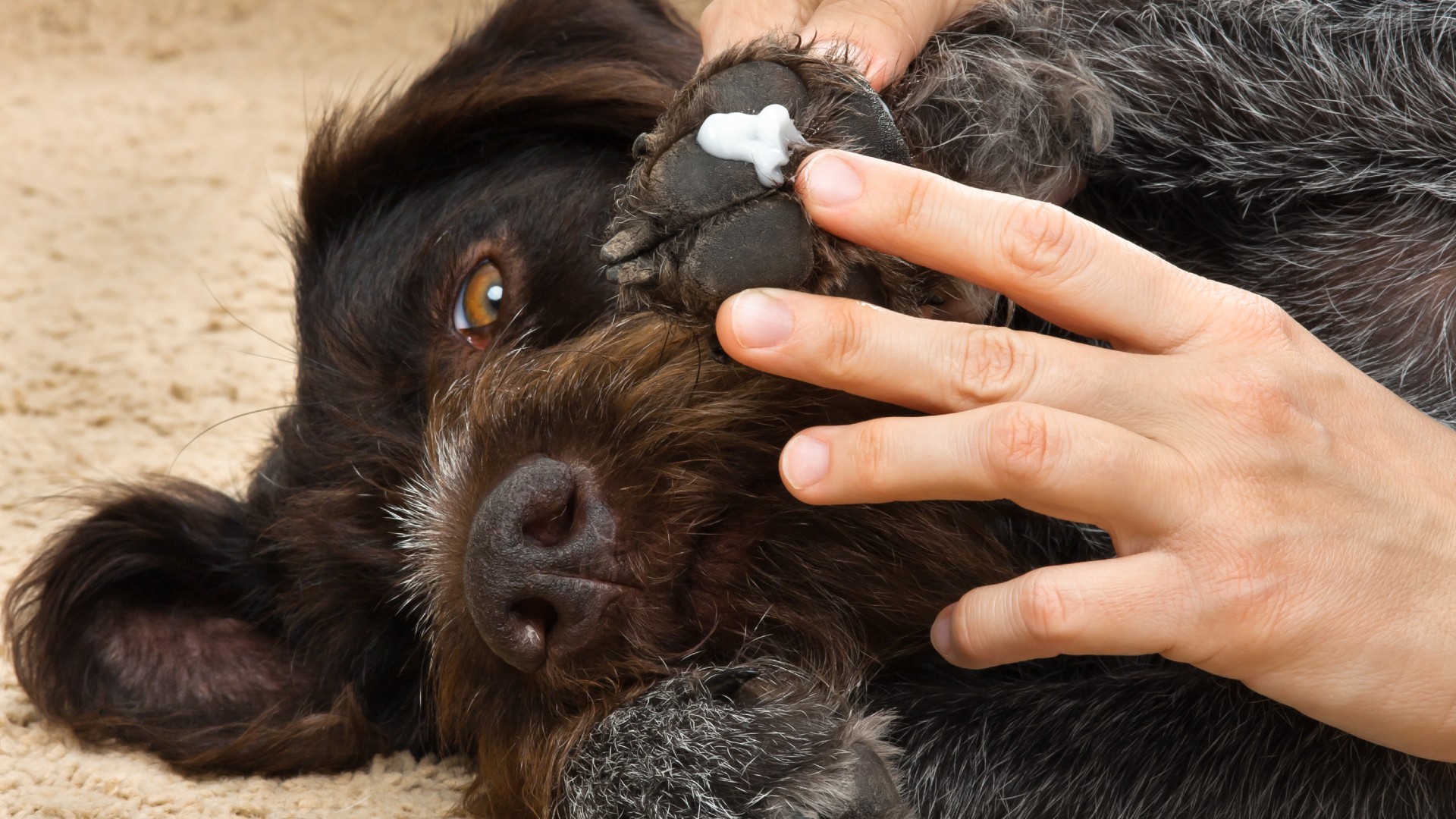
Knowing how to moisturize your dog’s skin is one of those often overlooked parts of being a pet parent, but it’s an important part of maintaining your canine companion’s overall health and wellbeing.
While a good dog shampoo does a wonderful job of keeping your pup’s fur clean and fresh, learning different ways to moisturize their skin will ensure that it stays smooth and hydrated.
It’s easy to think that after lathering your bundle of fur up with shampoo that following up with dog conditioner would help add moisture back into your dog’s skin and coat. But while soothing formulas containing ingredients such as oatmeal and coconut oil can certainly help relieve some of the itchiness and discomfort that dry skin can cause, finding regular ways to moisturize is the only way to keep your furkid’s skin looking and feeling its best.
Dry skin on dogs is a fairly common condition that can result in dandruff, hair loss and flaky skin that may cover the entire body. It can be caused by allergies and hormonal conditions as well as seasonal changes when air conditioning in the summer and heating in the winter can cause the skin to lose moisture. This is when learning ways to rehydrate your dog's skin can come in handy.
It’s important that you don’t just apply any old moisturizer though as many popular human products contain harmful chemicals and other ingredients that can be toxic for dogs if they’re ingested. The good news is, there are plenty of dog-safe moisturizers on the market that are soothing, nourishing and will have your canine companion’s skin back to peak condition in no time.
Below, we walk you through how to moisturize your dog’s skin, including some of the main factors that contribute to dry skin and our favorite remedies for giving dry and flaky skin the flick once and for all. And if you’re finding that the dryness is solely relegated to your pup’s paw pads and not the rest of their body, check out our guide natural ways to moisturize dog paws for some tootsie-specific tips.
Does my dog need moisturizer?
While a lot of us human folk have a daily moisturizing routine, regularly slathering lotion all over your dog isn’t going to be necessary unless they suffer from dry skin and the unpleasant side effects that often come with it. Conditioning your dog’s skin can bring with it a great deal of relief, but it’s also important to address the underlying causes of why their skin has become dry in the first place.
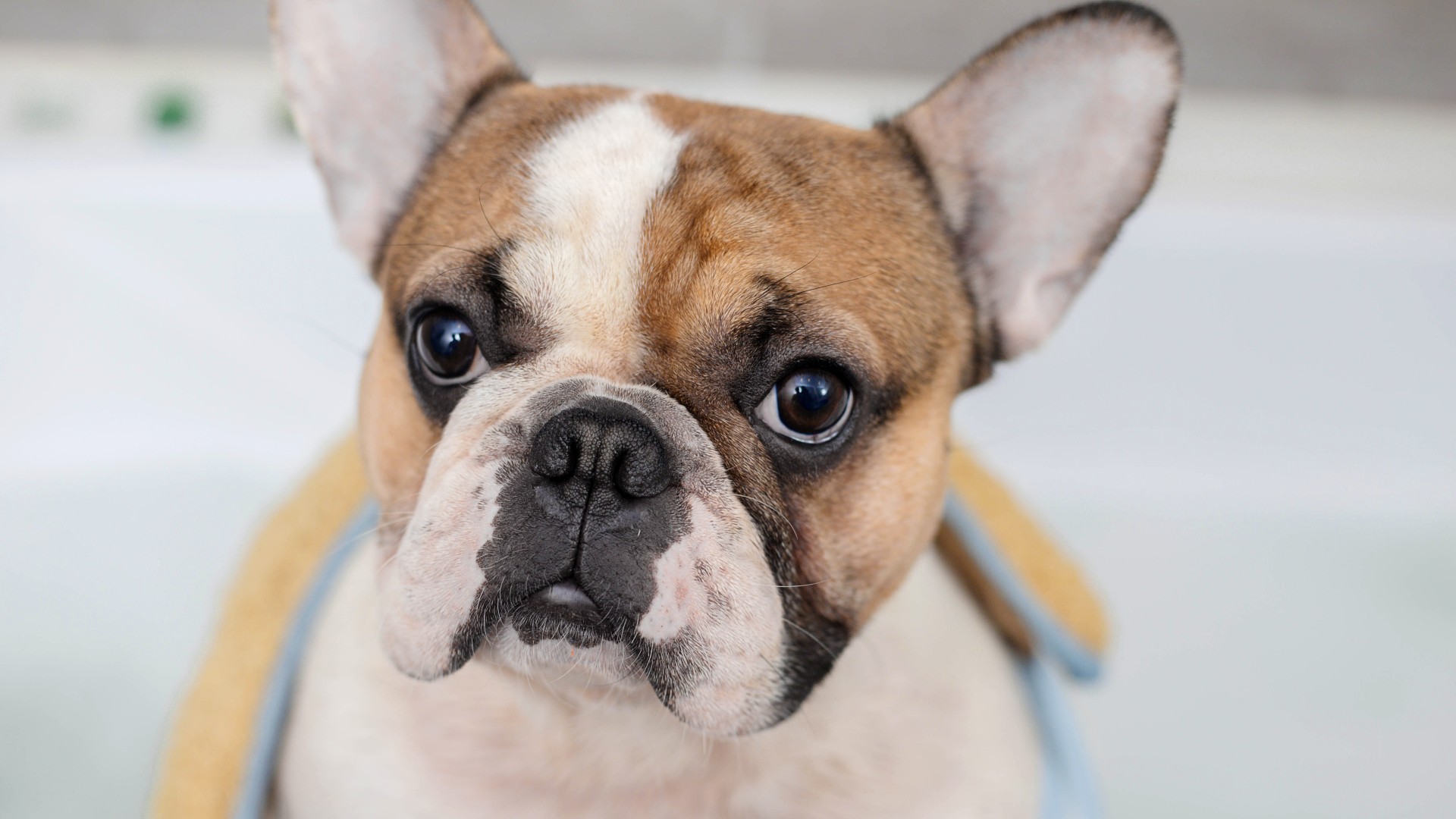
Why does my dog have dry skin?
It can be tricky to diagnose the exact cause of your dog’s dry skin because of the number of potential issues that could be triggering it, but here are some of the most common:
1. Diet
Taking a look at your dog’s diet is a good place to start when you’re trying to narrow down the potential causes of their dry skin. An imbalance of essential fatty acids (omega-3 and omega-6) or a lack of protein are two diet-related issues that can cause the skin to become itchy and flaky.
Grains and other ingredients, such as wheat, corn, soy, milk and eggs, have also been found to trigger allergic reactions in some dogs that manifest as skin issues. If you think your dog’s current diet might be to blame, check out our guide to the best dog food for allergies for our favorite skin-friendly formulas.
2. Too many baths
How often should I bathe my dog is a common question amongst pet parents and the answer is that it depends. Active dogs who are more prone to getting dirty or larger dogs with long hair will need bathing more frequently than thin-haired breeds and those that spend most of their time indoors.
But, the rule of thumb is to try to keep bathing to a once a month affair. The reason for this is that over-bathing your dog is likely to strip the skin of its natural oils, which is one way that it can become dry and flaky.
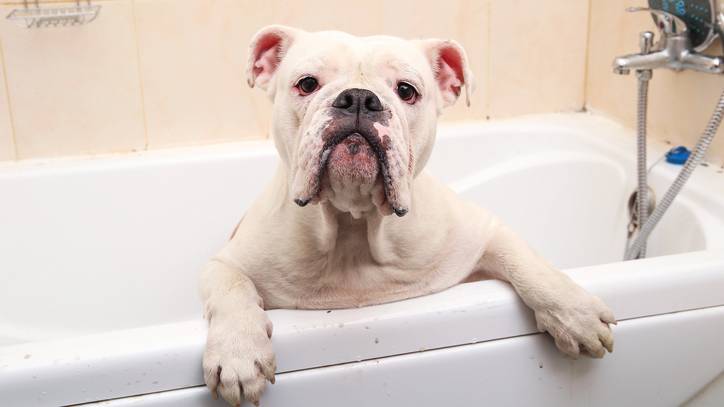
3. Dry air
If you’ve ever spent long periods in an air conditioned or heated room, then you likely know what it’s like to have your skin dry out. The same is true for our canine companions whose skin is also affected by seasonal changes in temperature, both indoors and outdoors.
If you live in an area where the humidity tends to be low, you may find it helpful to invest in a humidifier, which will help add moisture back into the air which may be enough to combat your dog’s dry skin.
4. Allergies
Alongside possible food allergies, your pup may also suffer from seasonal or environmental allergies that can trigger dry skin. Things like pollen, dust, grass, grain, animal dander and flea saliva are all common culprits.
The latter can also cause a condition known as flea allergy dermatitis, which can cause itchiness, redness, and inflammation. The best way to prevent this is to ensure your pup is protected from pesky parasites with one of the best flea treatment for dogs.
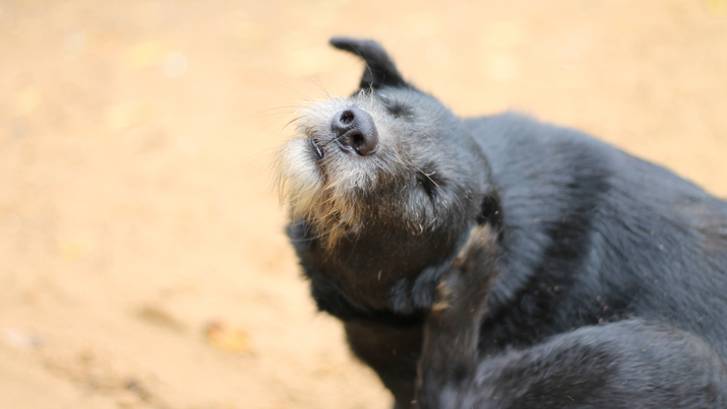
5. Health issues
Bacterial and fungal infections, such as ringworm, are well known to cause dry skin in dogs. If your dog has a metabolic disease, such as hypothyroidism or Cushing’s disease, or an autoimmune illness, you may also find dry skin to be a common side effect.
6. Their breed
Finally, some breeds are just genetically more predisposed to skin conditions than others. Hairless dog breeds, such as the Chinese Crested, can struggle with a number of skin-related issues, and larger double-coated breeds, like the Siberian Husky and Alaskan Malamute, can develop a condition known as zinc-responsive dermatosis that can interfere with normal skin cell development.
How to moisturize your dog’s skin: 7 simple remedies
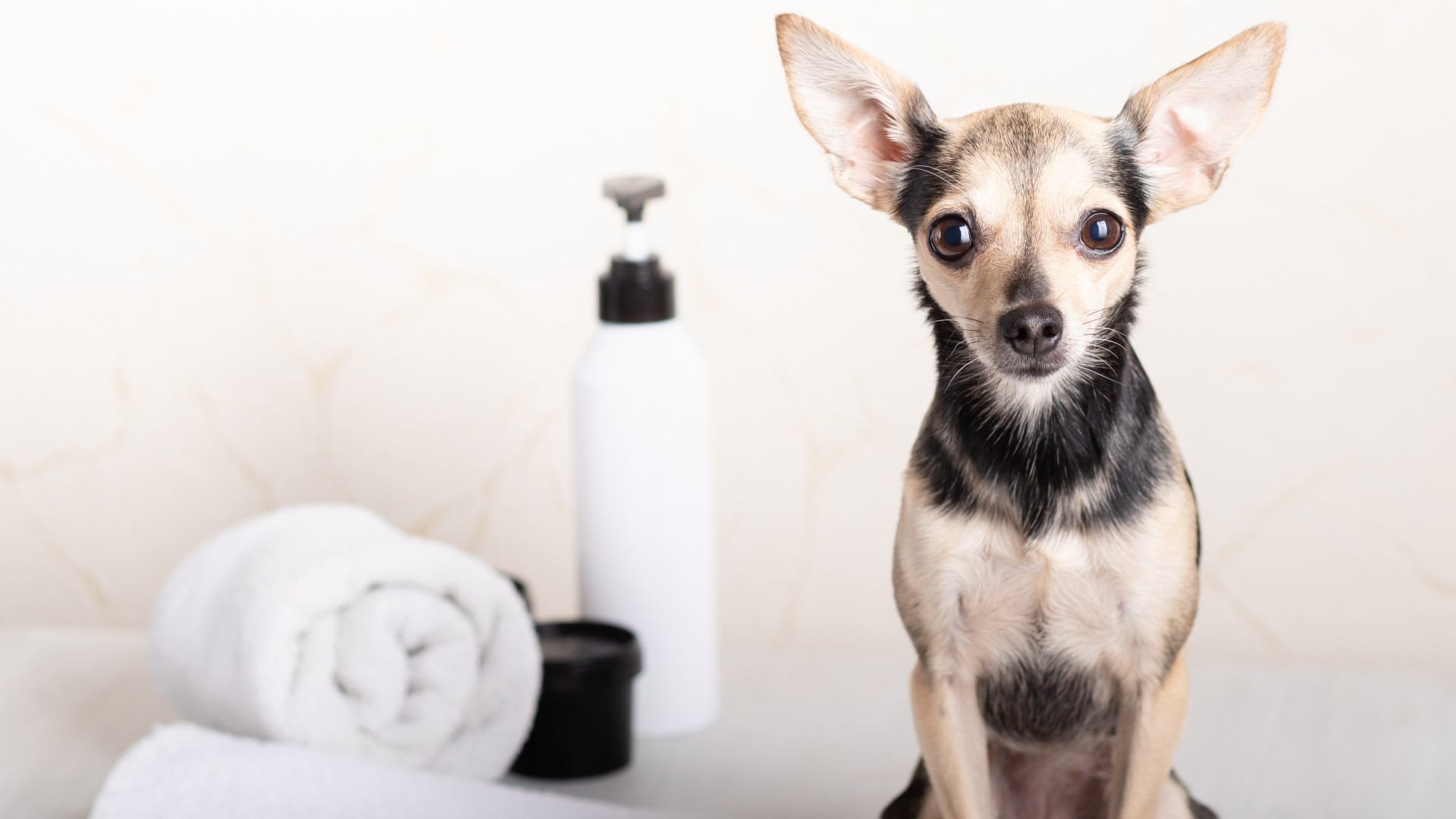
There are lots of different ways you can add moisture back into your dog’s skin and it’s important to remember that this is very much a process that starts from the inside out. With that in mind, here are a few internal and external remedies to get your pup’s skin looking its best:
1. Feed them a good diet
The best dog food is complete and balanced, containing everything your canine companion needs to stay happy and healthy. But some formulas will contain more of some things than others and when it comes to dry skin, it’s crucial to look for a wet or dry dog food that contains an abundance of omega-3 and omega-6 fatty acids. These do a beautiful job of nourishing the skin and contributing to its overall health.
2. Add extra oils if necessary
If you feel that your dog isn’t getting enough fatty acids in their diet, speak to your vet about supplementing with salmon, krill or coconut oil, which can be added to your pups meals to give them an extra boost. Your vet will be able to advise you on the correct dosage, as too much oil can cause digestive disturbances.
3. Make sure your pup is drinking enough water
Just like with us humans, water is essential for keeping the body functioning at its best and it’s also essential for adding moisture to the skin. If you’re worried your dog isn’t getting sufficient hydration, consider investing in one of the best pet water fountains to encourage them to drink more.
4. Use products designed for dry skin
While we recommend you avoid bathing your dog too frequently, when you do lather your pup up, stick to a nourishing shampoo and conditioner that use ingredients such as oatmeal, shea butter, coconut oil and aloe vera, all of which are designed to add moisture back into the skin.
5. Try coconut oil
While we’ve mentioned adding coconut oil to your dog’s food in appropriate doses, this miracle oil can also be used externally, with many pet parents reporting great results when it comes to getting rid of dry and flaky skin and relieving inflammation and itchiness. Apply to your dog’s coat, being sure to rub it into the skin.
6. Keep an eye on the weather
This goes for both indoors and outdoors. A dog’s skin is particularly sensitive to extreme changes in temperature, when the air in the home or outside is too cold or too hot.
Low humidity is particularly problematic, so investing in a humidifier is well worth it if you find that this tends to trigger dry skin in your dog as these help put moisture back into the air - super important if your dog spends a lot of time in heated or air conditioned rooms.
7. Regular grooming
One of the easiest ways to keep your canine companion’s skin in tip-top condition is to engage in regular grooming sessions using a good dog brush. We recommend you brush your pup at least once a week (more is preferable!) as this will help distribute the natural oils in your dog’s coat as well as removing dead hair and old skin cells.
PetsRadar Newsletter
Get the best advice, tips and top tech for your beloved Pets

Kathryn is a freelance writer who has been a member of the PetsRadar family since it launched in 2020. Highly experienced in her field, she's driven by a desire to provide pet parents with accurate, timely, and informative content that enables them to provide their fur friends with everything they need to thrive. Kathryn works closely with vets and trainers to ensure all articles offer the most up-to-date information across a range of pet-related fields, from insights into health and behavior issues to tips on products and training. When she’s not busy crafting the perfect sentence for her features, buying guides and news pieces, she can be found hanging out with her family (which includes one super sassy cat), drinking copious amounts of Jasmine tea and reading all the books.
